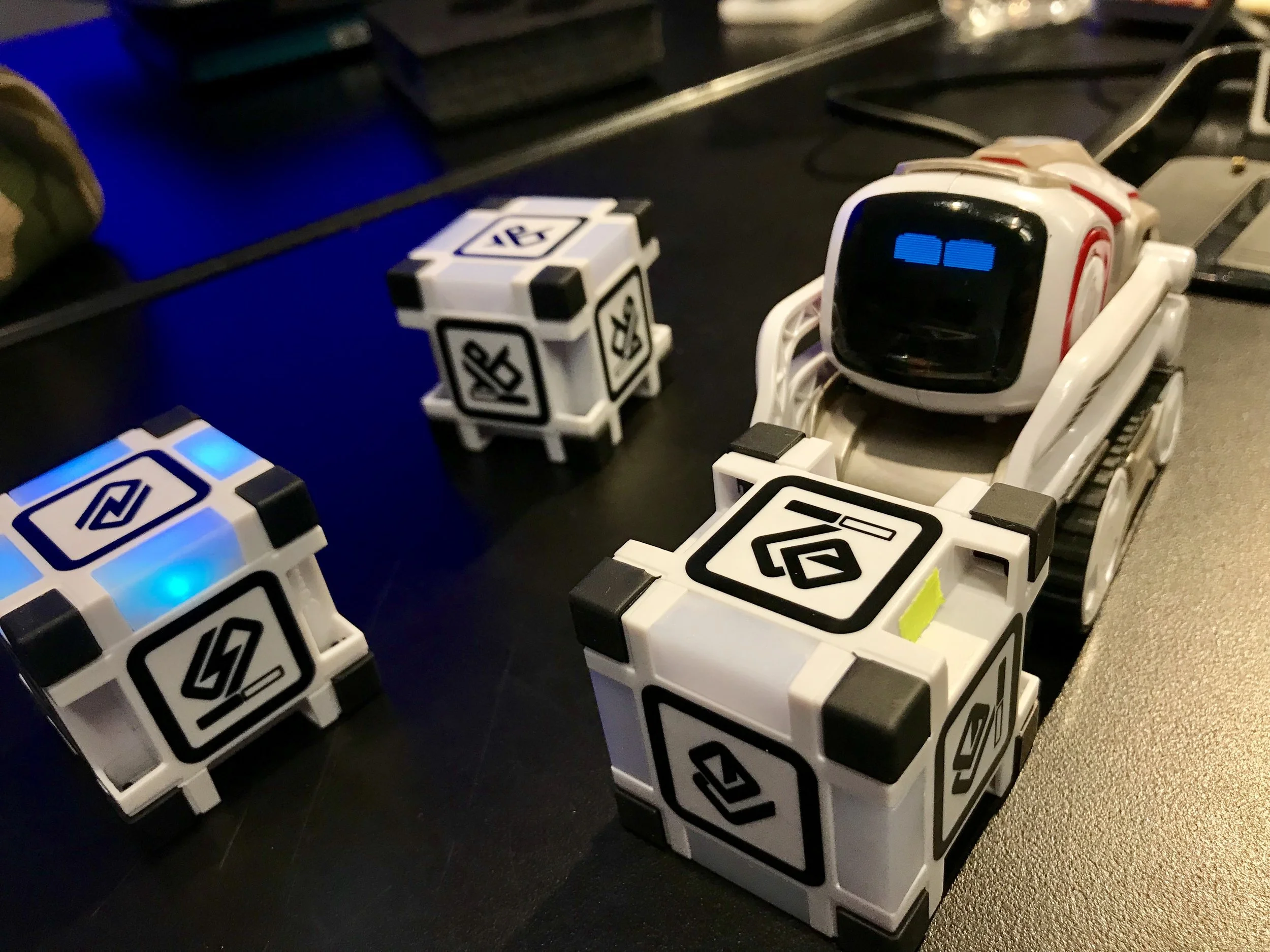Such a cutie!
This week our assignment was to work in small groups to design a learning activity with one of the smart toys we tested and played with in class. Our group chose Cozmo.
The Persona
We set out to make a game for a 7-9 year old child who likes competitive games and using their imagination to create new worlds. This child is also a tactile and hands-on learner who likes to use their creativity and ingenuity to build, tinker and create projects.
The Design
We wanted this game to be:
Active: We wanted kids to move their bodies when playing this game to encourage them to think about how they and their toys interact with their environment, instead of being isolated from it.
Collective: The games we played with Cozmo in class were more targeted towards an individual interacting with Cozmo, so we wanted to find a way to have kids play with this toy together.
Ruled: We wanted to make a game that had ground rules but still allowed for creativity inside those constraints.
Physical + Mental: We wanted kids to move and explore their own space, something that there is a danger of losing with smart and virtual games. We also wanted kids to learn to code in an exciting and novel way.
Gender Neutral: We believe these toys and game should be for everyone.
Our goal was to make a physical game to help young hands-on learners begin to code. Scratch is an incredible learning tool for kids, but most of the projects are online and we wanted to create a learning experience to teach them how the physical world can be designed, changed and interacted with using code. In addition, based on our playtest with Cozmo in class, we also wanted to challenge ourselves to create an interactive learning game without depending on the Cozmo smartphone app, which we felt interrupted the experience of engaging with Cozmo.
The Game
1. Design the course
2. Program your moves
3. Drive!
This is a 2+ player obstacle course race - designed by the kids’ imagination and built with household objects. After creating the course, the kids are instructed to place Cozmo’s cubes along the course - the goal is to get to the finish line first, but tapping these during the race will get you extra points. A player could theoretically win even if they finished last, but tapped more cubes. Once a cube is tapped by one Cozmo, it cannot be tapped again.
The kids place their Cosmos on the starting line and study the course. The challenge is to find the shortest/quickest path to the finish line and get the most points by weighing the option of detouring to tap cubes. Using physical codeblocks (inspired by LittleBits and Scratch and yet to be developed), each child programs a series of commands for their Cozmo to navigate through the course. We came up with the idea of physical code blocks because we wanted to find a tangible way for kids to create code offline. Looking at the design of the Scratch, we imagined these blocks of code could be fabricated to be modular “puzzle” pieces similar to LittleBits or Legos.
This game is designed to help children to learn:
Coding skills
Spatial awareness
Logic
Exercising their imagination
Collaboration




